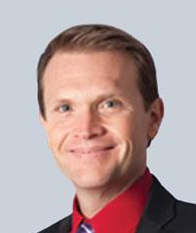Fluvial Sedimentology and Geomorphology
OR
About the Course
AAPG members, view the course for free!
AAPG E-Symposium Series. This short course will focus mainly on “source-to-sink”, and will detail methods used to quantify and qualify the sediment mass transported from the hinterland to the depocenter and the storage sites in route. This segment will train in the “fulcrum” approach for quantitatively approximating the sediment budget for ancient source-to-sink systems.
For more lectures like this, join AAPG today
Your Instructor

John M. Holbrook does fundamental research and private consulting (petroleum and environmental industries) within the fields of sedimentary geology and stratigraphy. His specialization is sequence stratigraphy and fluvial stratigraphy and he is a Professor at Texas Christian University (since 2011). He holds the following degrees: B.S. University of Kentucky; M.S. University of New Mexico; Ph.D. Indiana University. He worked from 1992-2004 at Southeast Missouri State University, University of Texas at Arlington (2004-2011), and has been a guest professor at Enugu State, Nigeria; St Petersburg State, Russia; and University of Texas at Dallas. His professional affiliations include GSA, SEPM, AAPG, AGU, and he has served those organizations in the following capacities: GSA Council ‘11-‘15; President GCSSEPM 2010; Vice-chair Missouri Board of Geologist Registration 2002-2004; Chair GSA Sedimentary Geology Division and SEPM Counselor (Research Counselor) 2008-2010; SEPM Annual Meeting Organizing Committee (Funding Coordinator 1998 & 1999; Oral Technical Chair, 2008; Poster Chair, 2010); AAPG Distinguished Lecturer 2015-2016. He has worked on numerous funded industry and research stratigraphic projects globally and sat proposal review panels for PRF, NSF, and USGS. He is one of two Principle Investigators for the Fluvial Research Group (FRG) industry consortia administrated at the University of Leeds and is the U.S. coordinator.
Course Curriculum
-
Start1. Introduction (2:14)
-
Start2. Source to Sink Approaches - Catchment Approach (2:29)
-
Start3. Source to Sink Approaches - Grain Sequestration (2:04)
-
Start4. Source to Sink Approaches - Basin Volumes (3:26)
-
Start5. Source to Sink Approaches - Fulcrum Test (3:56)
-
Start6. A Fulcrum Test Work flow - Data Collection (5:40)
-
Start7. A Fulcrum Test Work flow - Estimate Bankfull Discharge (7:40)
-
Start8. A Fulcrum Test Work flow - Mass Balance (12:51)
